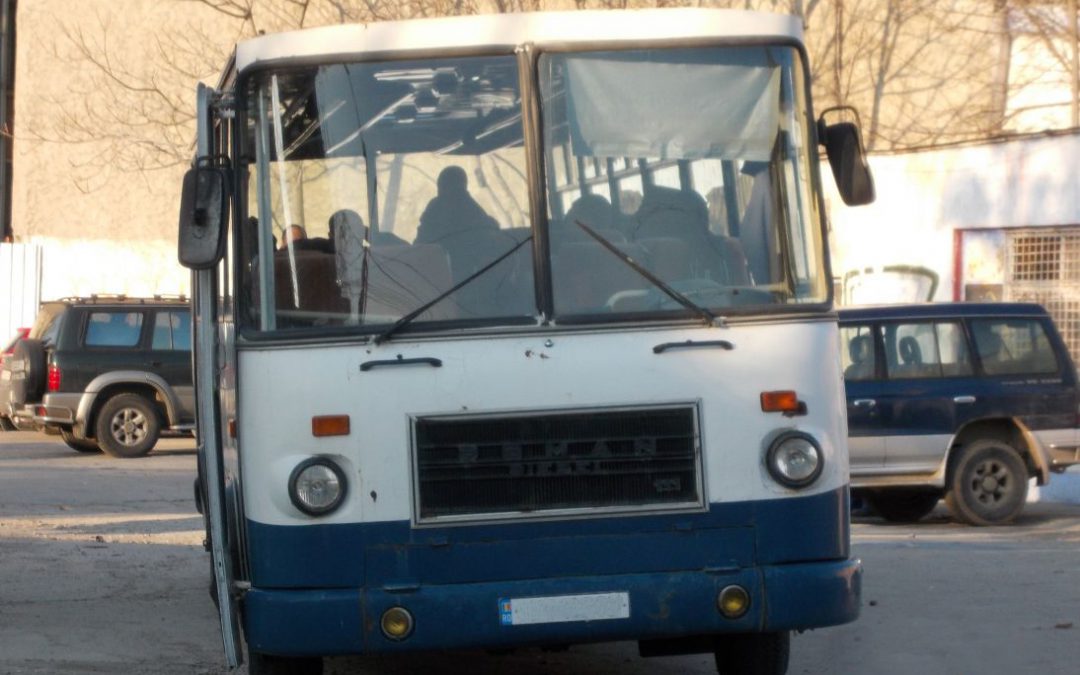These testimonials of my fellow avionics engineers regard the time span 1986-1992 and seem to be extracted from Zoshchenko. They are true stories of life of aviation engineers of that time, illustrating how high level engineering was done in a country, which seemed to belong to the third world back then. The wake of communism is very vivid in these stories. One of the characteristics of communism is that always something very basic is on short supply. We could have an aerospace industry, but no Diesel fuel and powder milk for babies.
Fellow V. Testimonial
”How did I end up working for the Civil Aviation Authority? I was working at Clinceni, in the military, in the Calugăru’s team. We were carried by army buses every day from Bucharest to Clinceni. We repaired MiG-23 missiles, which broke down often, because they did not have anti-stupid couples, could be connected in both positions. If the couple was inserted in the wrong position, the guidance unit burned in a couple of seconds and was sent to us. We got much work to do, because those who connected the units were very productive. The unit was sealed in Nytrogen. We got inside, repaired the gyroscopes, and then sent them to Chișinău to be resealed in Nytrogen. We did not have that particular tool, we just did the electrical part. Until one day, when the army ran out of fuel for buses. We were informed that the Diesel fuel was missing, and our transfer to Clinceni was no longer available. Thus, we needed to find work in the city. They were just funding the Romanian Civil Aiviation Authority. We had no clue what was it about. We did not know much about civil aviation, but we were forced to learn.”

Fellow C. Testimonial
”I was working at Clinceni too, in Călugăru’s team. Our task was to transform a Soviet Air-to-Air missile into a Ground-to-Air missile. After we finished the prototype, we had to ship it to Aerostar Bacău, for testing. The problem was how? The rocket was about 6 ft. long, in a private car could not fit in, and on the roof might have risen suspicion. The army had no Diesel fuel to send it by truck to Bacău. Thus, we tried to be creative. We took out the wings and put them in a luggage. The bare rocket was thin, and yet long. We rolled it in a Persian carpet and took it by bus to the railway station, and then by train. We put it on the corridor of the coach. People stumbled over it, but we were not concerned, it was disarmed and resilient enough. At Bacău we got inside the factory without problems. Due to the thefts, guardians were only paying attention to people going out. After successfully delivering the rocket to the testing engineers, we recovered our carpet and left. Almost, because the vigilant guardians stopped us on exit, pointing to the carpet. ”Where did you take this from?” ”We came with it, didn’t you see us?” We had to struggle to get away with the carpet.”

Airbus Safran Launchers Prize 2017
On 8 June 2017 at the Air and Space Museum of Paris Le Bourget, the students of the Faculty of Aerospace Engineering gathered in the Space Piranhas team have won the prestigious Airbus Safran Launchers Prize, awarded by the European Astronautic Club, with support from...
News Diploma / Dissertation
News on ending of studies have just been published on site, of interest for the 4th Year Bachelor and 2nd Year Master students. Read the news on Diploma Projects / Exams <here> Read the news on Dissertations / Dissertation Exams <here> Caution, the UPB...
Iosif Șilimon
”85 years back, on 22 July 1918, an outstanding man was born, who passed away on 8 February 1981, but will live in our memory and in the history of the Romanian aviation through the creation of the IS gliders. After graduation in 1941 of the Aviation Section of...
CFP Big Data from Space
Please note three Calls For Papers on Big Data from Space, kindly provided by Prof. Mihai Datcu (DLR): 2017 Conference on Big Data from Space (BiDS'17) Research, Technology and Innovation 28-30 November 2017 Centre de Congrès Pierre Baudis, Toulouse, France...
Introduction to Aerospace Engineering
The book was written in 2009 by Associate Professor Dr. Octavian Thor Pleter. It is written for the future aerospace engineers, in an attempt to capture both the complexity and the fascination of this cutting edge profession, in a holistic, multidisciplinary...
Antonio Licu
Eng. Antonio Licu Eng. Antonio Licu is the leader of AirNav Board, a Think Tank consisting of high graduates of the University Politehnica of Bucharest, Faculty of Aerospace Engineering, personalities of the field, professionally established in international...
French-Romanian Company of Air Navigation
French-Romanian Company of Air Navigation (“Compagnie Franco-Roumaine de Navigation Aérienne”) was founded by Aristide Blank, a controversial Romanian banker, using French ex-military pilots, made redundant after the war. The company was located in rue de...
Polizu Wind Tunnel
The Wind Tunnel in Polizu at the time of its inauguration represented one of the most advanced aerodynamic labs in the world. The tunnel was designed by Ion Stroescu (1888-1961), based on an original blue print, which included a patent and more innovations...
Aerospace Structures Laboratory
Equipping the Aerospace Structure Laboratory with an AG6 aircraft The Faculty of Aerospace Engineering wishes to warmly thank the management and staff of AEROSTAR S.A. Bacau that contributed to the endowment of the Aerospace Structures Laboratory by donating a...
Air Navigation Laboratory
Air Navigation Laboratory was inaugurated in 2010 in partnership with ROMATSA and the Romanian Civil Aeronautics Authority


0 Comments